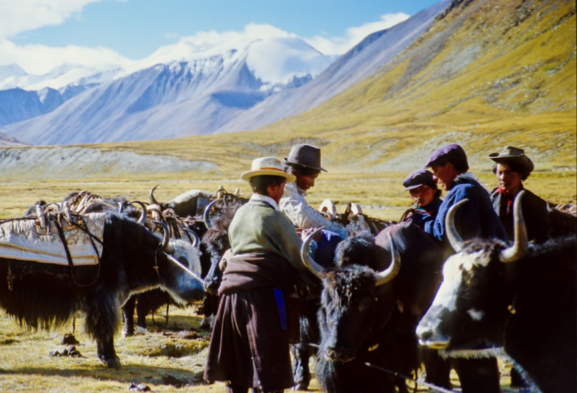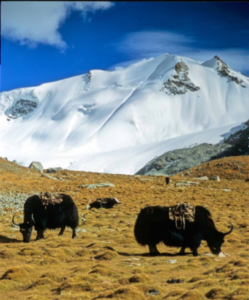
Photos courtesy of Julia Klein/CSU
While more than half of the world’s population rely on resources such as timber and water from mountain ecosystems, these systems face unique threats in both the long and the short term. New research led by Colorado State University explores these threats at a global scale for the very first time, illuminating strategies needed to improve sustainability.
“One thing that is exciting about this project is that we strove to have worldwide representation of mountains, rather than to just focus on mountain areas that are popular and well-researched, like Europe and the U.S.,” said Julia Klein, associate professor in the Department of Ecosystem Science and Sustainability. “When we identified gaps in certain areas, such the Alborz range in Iran or the Pamirs in Central Asia, we developed partnerships with researchers from those regions so that they could contribute to our survey. With this approach, we could explore challenges and opportunities for mountain environments and people from a truly global perspective.”
The study, “Catalyzing transformations to sustainability in the world’s mountains,” was published earlier this year in Earth’s Future, a journal from the American Geophysical Union.
The research team’s analysis revealed that many mountain systems face both abrupt threats, such as extreme weather events or economic crises, and gradual threats, including climate and policy change. The most widespread challenge to mountain environments and communities comes from policies implemented by people who live outside of the area and who often lack important local knowledge.
“The outsiders’ interests aren’t necessarily grounded in that place as well,” Klein explained.
Land-use types
 By categorizing mountain systems according to land-use types, such as logging or tourism, the researchers were able to explore the different threats faced by different types. They also considered the economic orientation of mountains and found that in the developing world, where people’s livelihoods are more subsistence-oriented, mountain systems are most at risk, despite the many benefits and resources they provide.
By categorizing mountain systems according to land-use types, such as logging or tourism, the researchers were able to explore the different threats faced by different types. They also considered the economic orientation of mountains and found that in the developing world, where people’s livelihoods are more subsistence-oriented, mountain systems are most at risk, despite the many benefits and resources they provide.
Klein said the research team found that as tourism becomes more important in a mountain community, the residents lose more local goods and services, such as locally grown food and medicines harvested from the environment.
In addition, scientists documented more impacts related to climate change.
Mountains are sacred spots for many people, imparting spiritual importance and vital cultural identity. – Julia Klein, CSU researcher
“One of the most dramatic and profound aspects of climate change in high mountains of the world is the loss of glaciers,” Klein said. “It’s very visible and increasingly well-documented. Our work reveals the other cascading effects of climate change and the implications for critical material goods from mountains — things like medicine, tourism, recreation, energy and food. We also highlight the cultural and spiritual significance of mountains. They are sacred spots for many people, imparting spiritual importance and vital cultural identity to local mountain people.”
Systems around the world
The project began with a workshop attended by experts from 12 different mountain systems around the world. Working with additional scholars, the team identified key facets of mountain systems around the world, including their common characteristics, stressors, paradoxes — such as being rich in resources but poor in income — and benefits to humans.
This collaboration enabled the researchers to build a conceptual model of mountain systems.
Explore a story map of a mountain range in Pamir, Afghanistan that was part of this research project. The map was created by CSU students in conjunction with the research team. https://col.st/pHXPU
The team then explored how the conceptual model applies to mountain systems around the world. They surveyed experts from 57 systems across 37 countries, collecting detailed data on land use, stressors and the role of local knowledge, among other factors.
The findings point to the complex, cross-disciplinary efforts necessary to ensure sustainability of Earth’s mountain systems. The research team suggests the need for scientists, local stakeholders and policy makers to collaborate on decisions about what an ideal future looks like for a given mountain system, and how best to achieve it.
Writers with the American Geophysical Union, or AGU, contributed content for this story.
The work in this project was managed by the Mountain Sentinels Network, a group funded by the National Science Foundation and led by Klein, Robin Reid (CSU), Catherine Tucker (University of Florida), Anne Nolin (University of Nevada) and scientists and stakeholders working toward sustainable mountain futures worldwide.